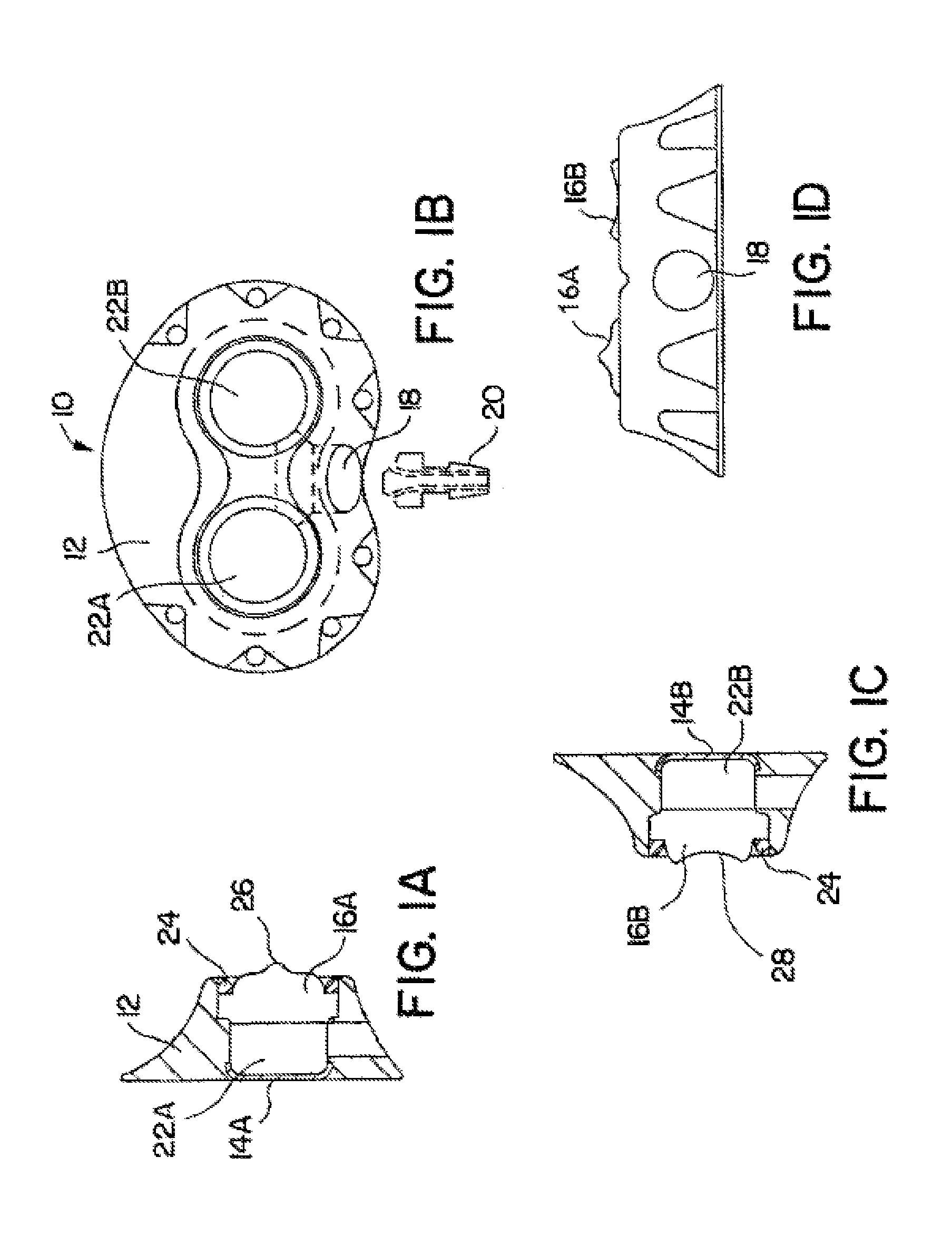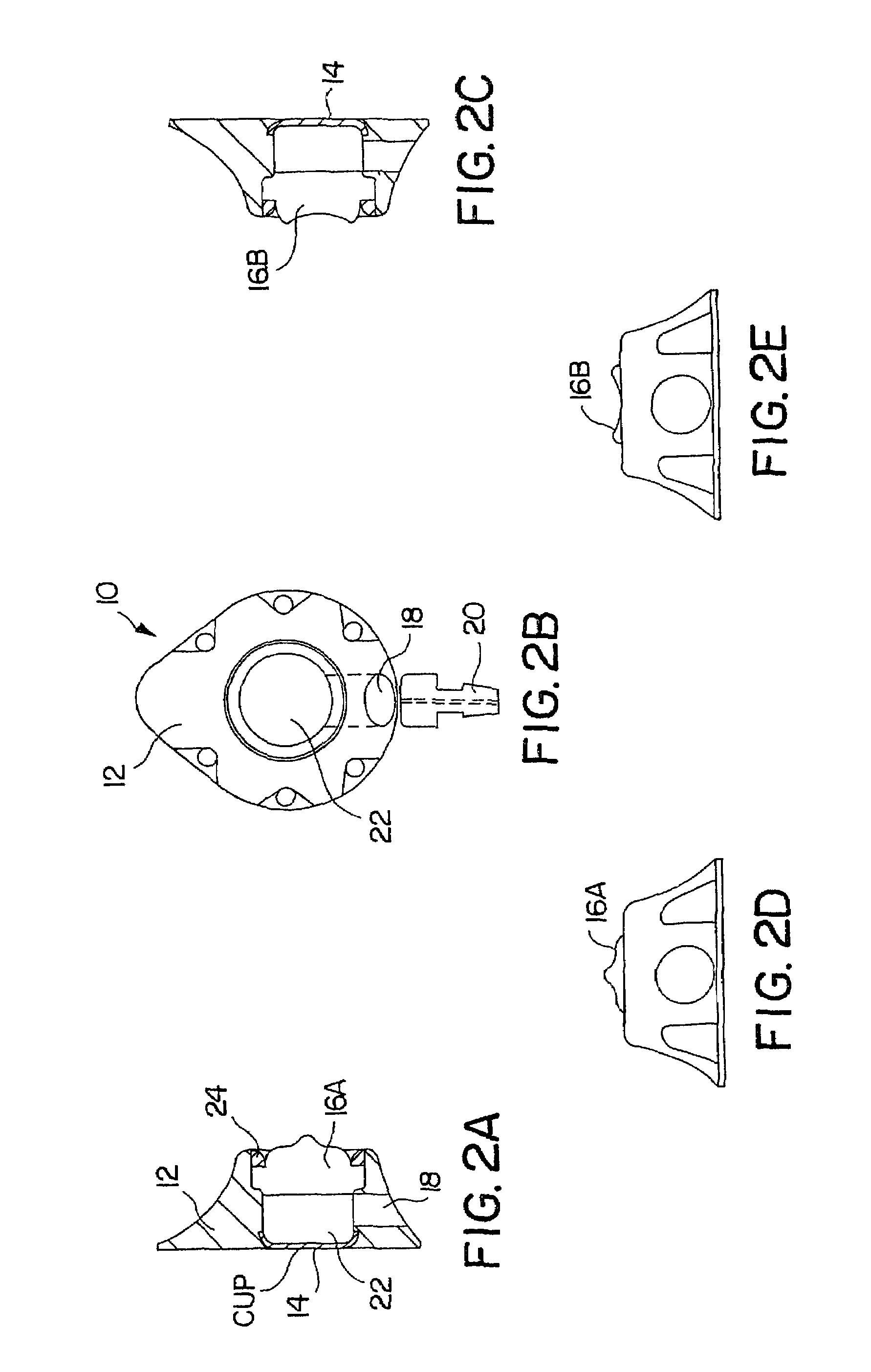Implantable vascular access device with ceramic needle guard insert
a technology of implantable vascular access and ceramic needle guard insert, which is applied in the direction of medical devices, other medical devices, etc., can solve the problems of difficult fabrication, high cost, and all-metal construction, and achieve the effect of better anatomical fit in the subcutaneous area
- Summary
- Abstract
- Description
- Claims
- Application Information
AI Technical Summary
Benefits of technology
Problems solved by technology
Method used
Image
Examples
Embodiment Construction
[0043]FIGS. 1A-1D depict various views of the preferred dual-port implantable access device 10 of the present invention. The port 10 generally comprises a housing member 12 defining fluid chambers 22A and 22B. The chambers are sealed by the housing 12, bottom cup members 14A and 14B, and self-sealing septum members 16A and 16B. In this embodiment, the housing 12 is preferably formed of titanium, stainless steel, ceramic, and / or other biocompatible material. The septum 16A and 16B is preferably formed of silicon or other semi-permeable materials that permit ingress and egress of needles to deliver fluid to the chambers 22A and / or 22B. An exit port 18 is provided in communication with chambers 22A and 22B, which delivers fluid out of the chambers 22A and / or 22B to a predetermined location, via stem 20 and attached catheter (not shown), as is understood in the art.
[0044]The septums 16A and 16B are formed with a generally circular shape, and, as shown in the drawings, may include a nipp...
PUM
 Login to View More
Login to View More Abstract
Description
Claims
Application Information
 Login to View More
Login to View More - R&D
- Intellectual Property
- Life Sciences
- Materials
- Tech Scout
- Unparalleled Data Quality
- Higher Quality Content
- 60% Fewer Hallucinations
Browse by: Latest US Patents, China's latest patents, Technical Efficacy Thesaurus, Application Domain, Technology Topic, Popular Technical Reports.
© 2025 PatSnap. All rights reserved.Legal|Privacy policy|Modern Slavery Act Transparency Statement|Sitemap|About US| Contact US: help@patsnap.com



